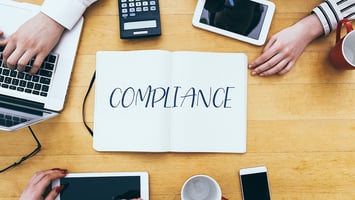As the world becomes increasingly digital, IT organizations are faced with a growing number of...
Addressing Common IT Compliance Requests: Mobile Device Management
IT and compliance are closely connected because IT is responsible for managing and protecting sensitive information. This includes financial data, personal information, and other confidential data that must be handled in accordance with various laws and regulations.
Why is Compliance Important to IT Organizations?
Compliance can have a big impact on IT organizations, both positively and negatively. On the positive side, compliance helps IT organizations establish a secure and trustworthy environment for handling information. By following laws and regulations, IT organizations can demonstrate to customers, stakeholders, and regulatory authorities that they take data security seriously and are committed to protecting sensitive information. On the negative side, compliance can be time-consuming and costly for IT organizations. Implementing and maintaining compliance requires a significant investment of resources, including staff time, training, and technology. Additionally, failing to comply with regulations can result in penalties, legal action, and damage to the organization's reputation, which can be difficult and expensive to repair.
What Are Common IT Compliance Requests That Need To Be Addressed?
Here are some more common compliance requests that IT organizations worldwide have to address.
Industry-Specific Regulations:
Industry-specific regulations such as the Health Insurance Portability and Accountability Act (HIPAA) for the healthcare industry and the Payment Card Industry Data Security Standard (PCI DSS) for the financial industry set standards for protecting sensitive information in specific industries. IT organizations must ensure that they are compliant with these regulations by following industry-specific best practices and undergoing regular audits.
Access Management Regulations:
Access management regulations refer to implementing and receiving certification in SOC2 primarily in the United States and ISO 27001, which is the international standard set for managing access to sensitive information. IT organizations must ensure that they are compliant with these regulations by implementing strict access controls and monitoring access to sensitive information.
Let’s Take a Look At An Example Compliance Request
Create your objective, decide how to handle it, and bring the right stakeholders to the table to help develop and implement policies and procedures to make your organization compliant.
Security and compliance can affect more than just the surface level technology and devices. It also affects the mobile devices your employees use day-to-day. Mobile Device Management (MDM) is important for IT organizations as it helps them to secure, manage and monitor mobile devices, which can help to protect sensitive data and comply with laws and regulations, increase productivity and reduce costs, and improve response times and inventory management.
For example, Mobile Device Management (MDM) solution & User Endpoint Devices
- Objective: Information stored on, processed by or accessible via user endpoint devices is protected against risks.
- How to Handle It:
- Define User Endpoint Devices: "endpoint devices used by users to access information processing services.
- Establish a topic-specific policy on secure configuration and handling of user endpoint devices.
- Build & Agree on an Acceptable Use Policy
- Define User Responsibility
- Develop Policies for Use of Personal Devices
- Wireless Connections
- Asset Management Policy
- Mobile Device Management Solution
Let’s Dive Deeper Into The “How To Handle It”
Implementing a Mobile Device Management (MDM) solution is an important part of managing and securing user endpoint devices, such as smartphones and laptops, in an IT organization.
Here's how IT organizations typically implement MDM solutions:
- Identifying Requirements: IT organizations must first identify their specific requirements for managing mobile devices, including which types of devices will be used, what data needs to be protected, and what policies and procedures are necessary to ensure compliance.
- Selecting a Solution: IT organizations must then select an MDM solution that meets their requirements. This can involve evaluating different vendors and products, as well as determining which features and capabilities are most important to the organization.
- Deploying the Solution: Once an MDM solution is selected, IT organizations must deploy it across their network. This can include configuring the MDM solution to meet the organization's specific needs, as well as installing the necessary software and hardware to support the solution.
- Managing Devices: IT organizations must then manage the mobile devices that are used by employees, including configuring device settings, enforcing security policies, and monitoring device activity to ensure compliance with regulations.
- Training and Support: IT organizations must also provide training and support to employees on the use of mobile devices and the MDM solution. This can include educating employees on best practices for using mobile devices, as well as providing ongoing technical support to ensure that the devices are functioning properly.
By following these steps, IT organizations can ensure that sensitive information and corporate data are protected and secure, and that they are in compliance with relevant regulations.
Read Disaster Recovery Plans to learn about the first common compliance example that we covered that IT organizations must address.
Learn more by downloading our eBook: Compliance Journey in the Age of SaaS


